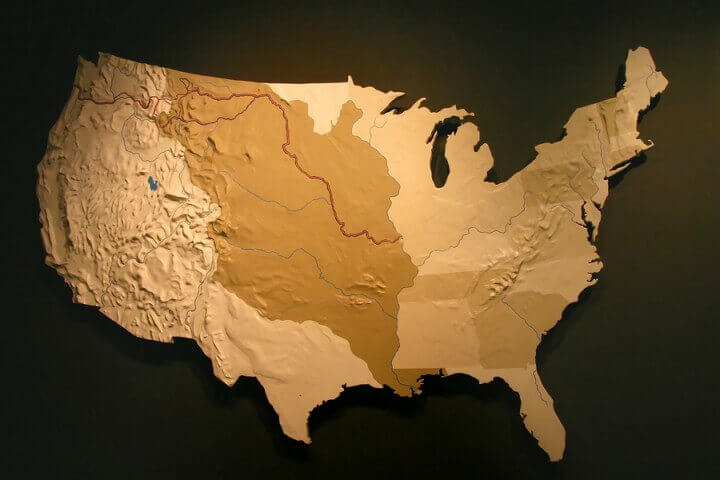 The Louisiana Purchase was the land acquisition by the United States of America of 828,000 square miles. The land in question was of French territory (“Louisiana”) in 1803. The cost of this purchase was recorded to be sixty million francs ($11,250,000) plus cancellation of debts worth eighteen million francs ($3,750,000). The total price of the Louisiana Purchase including interest was $23,213,568 dollars. This purchase was to extend the land of the fledgling United States of America and help diminish international influence in the growing country.
The Louisiana Purchase was the land acquisition by the United States of America of 828,000 square miles. The land in question was of French territory (“Louisiana”) in 1803. The cost of this purchase was recorded to be sixty million francs ($11,250,000) plus cancellation of debts worth eighteen million francs ($3,750,000). The total price of the Louisiana Purchase including interest was $23,213,568 dollars. This purchase was to extend the land of the fledgling United States of America and help diminish international influence in the growing country.
In 1762, France had ceded Louisiana to Spain, but by the secret Treaty of San Ildefonso written in 1800 the French had regained the area. Napoleon Bonaparte (the future Emperor Napoleon I) had envisioned a great French empire in the New World. He hoped to use the Mississippi Valley as a food and trade center to supply the island of Hispaniola, which he wanted to be the heart of his empire. There was only one problem- he had to restore French control of Hispaniola, where Haitian slaves had seized power. In 1802 a large army sent by Napoleon under the leadership of his brother-in-law, Charles Leclerc, arrived on the island to suppress the Haitian rebellion. Despite early military success, the French lost thousands of soldiers. This was mainly due to yellow fever, and Napoleon soon realized that Hispaniola must be abandoned. He rapidly concluded without that island he had little use for Louisiana. In addition he was facing renewed war with Great Britain and he could not spare troops to defend the territory; he also needed funds to support his military ventures in Europe. Facing this desperate situation in April 1803 he offered to sell Louisiana to the United States.
Concerned about what the French intentions really were President Thomas Jefferson had already sent James Monroe and Robert R. Livingston to Paris to negotiate for the purchase of a tract of land on the lower Mississippi or, at the very least, a guarantee of free navigation on the river. They were both surprised and delighted by the French offer of the whole territory and they immediately negotiated the treaty.
Thomas Jefferson was jubilant. With this one purchase the United States would double its size, an enormous tract of land would be open to settlement, and the free navigation of the Mississippi River would be assured. While the Constitution did not specifically empower the federal government to acquire new territory by treaty, Jefferson concluded that the practical benefits to the nation far outweighed the possible violation of the Constitution. The Senate went on to concur with this decision and voted ratification on Oct. 20, 1803. In a ceremony in New Orleans the Spanish, who had never given up physical possession of Louisiana to the French, did so on Nov. 30, 1803. A few weeks later in a second ceremony, on Dec. 20, 1803, the French turned Louisiana over to the United States.
The Louisiana Purchase was a huge piece of land. The borders of the purchase encompass portions of fifteen current U.S. states and two Canadian provinces. The land that was purchased contained all of present-day Arkansas, Missouri, Iowa, Oklahoma, Kansas, Nebraska, parts of Minnesota that were south of the Mississippi River, most of North Dakota, nearly all of South Dakota, northeastern New Mexico, northern Texas, the portions of Montana, Wyoming, and Colorado east of the Continental Divide, and Louisiana on both sides of the Mississippi River, including the city of New Orleans. There were some exclusions to this as the Oklahoma Panhandle, and southwestern portions of Kansas and Louisiana were still claimed by Spain at the time of the Purchase. It is important to note that the Purchase contained small portions of land that would eventually become part of the Canadian provinces of Alberta and Saskatchewan. The land that was included in the purchase comprises around 23% of the territory of the United States today.

Leave a Reply